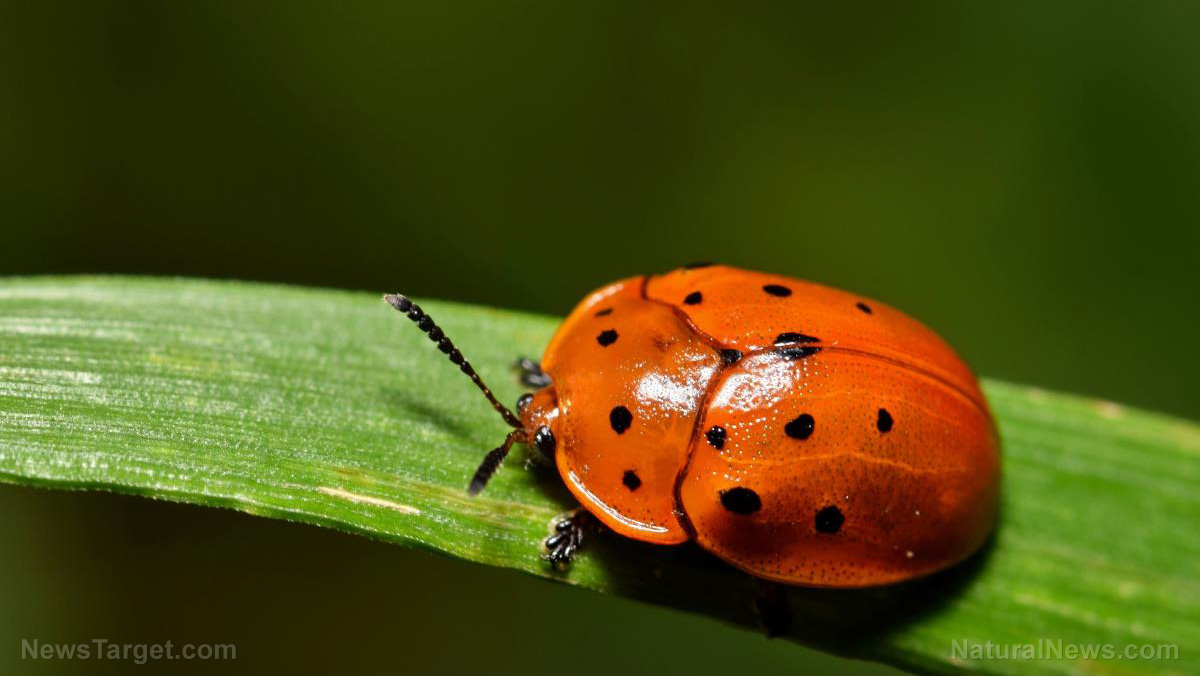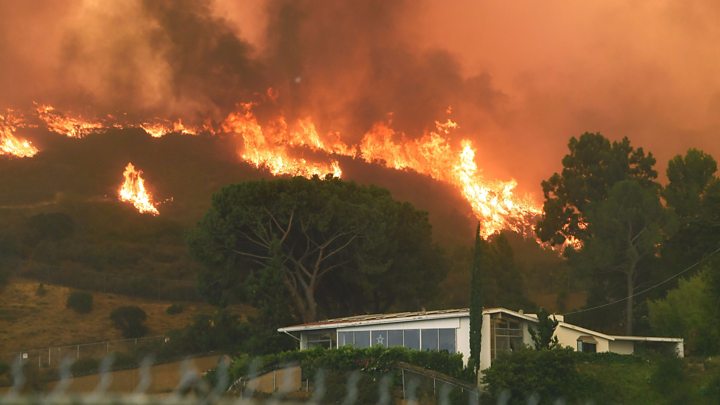Millions of mountain pine beetles are killing forests
08/21/2020 / By Divina Ramirez

Forests around the globe are fighting a pandemic, too – that of beetle infestations. The outbreaks of mountain pine beetles – bugs no bigger than a grain of rice – are killing mature pine trees in record numbers across the Canadian province of British Columbia (BC), according to a recent report from Bloomberg.
The mountain pine beetle has already infested enough trees to build nine million homes; however, the pests have demonstrated no sign of stopping in the near future. This has raised concerns that the infestations might also threaten to decimate log supplies in the U.S., similar to the ongoing situation in parts of Europe.
Experts point to rising temperatures as the main culprit behind the unhampered proliferation of mountain pine beetle populations despite concentrated efforts to stamp them out. BC, in particular, has seen the most rapid increase in temperatures across the globe in recent decades.
Mountain pine beetle infestations decimate lumber supplies
From 2000 to 2015, BC authorities estimate that the mountain pine beetles had decimated a total of 730 million cubic meters of pine trees. This translates to more than a decade of lumber supplies lost to BC, Canada’s largest exporter of timber to the U.S. housing market.
David Elstone, a professional forester and the founder of the Vancouver-based Spar Tree Group, said that the infestation is set to further reduce BC’s production of lumber supplies in the near future. Provincial modeling also indicates that the beetles might kill up to 55 percent of the region’s marketable pine trees by 2020.
For this reason, BC authorities are concerned that the recent infestation is going to further exacerbate the record-high prices of lumber in the global market due to the ongoing pandemic. There has been a surge of demand for lumber in the U.S. as people scramble to repair their homes during the quarantine.
The mountain pine beetles are also threatening to spread to forests of BC’s neighboring regions, and other beetle species are coming out of hiding, threatening the populations of other tree species, too. One such beetle, called the spruce beetle, is poised to infest BC’s spruce trees.
But it appears that the recent beetle infestations are not unique to BC. In Europe, the succession of droughts has left trees ripe for pests like beetles. In fact, about a dozen or so European countries are hard-pressed to contain outbreaks of the spruce bark beetle.
In fact, these beetles are projected to decimate more lumber supplies than the mountain pine beetles in BC should the droughts continue, according to recent reports from Canada’s Forest Economic Advisors (FEA).
Squashing the bugs
Decades ago, mountain pine beetles had been part and parcel of forest health. In feasting on mature trees, the beetles, in effect, turned them into fuel for natural forest fires. The fires fed on the dead trees to clean the forest floor of debris and to nourish the soil, setting the stage for more plants and saplings.
But humans became good at putting out forest fires in the 1950s, said Allan Carroll, the director of the Forest Sciences Program at the University of British Columbia. This, in effect, has left a buffet of older trees for the beetles to feast on.
On top of human interference, warm winters and rising temperatures in the region allowed the beetles to survive in areas that used to be too cold for them to live in. Therefore, without natural forest fires to burn older trees and cold winters to stall beetle activities, beetle populations were able to flourish unhampered.
But squashing the bugs is easier said than done. Caroline Whitehouse, a forest health specialist for the province of Alberta, detailed the painstaking process of singling out infested pine trees and felling them to contain the beetle outbreak.
Helicopters would scour the forest looking for signs of red pine tree needles. Red needles are a clear indication that beetles have bored into the bark and overwhelmed their host, said Whitehouse. She and her team also look for pine trees whose barks are oozing a reddish resin, another sign of beetle infestation.
The team then cuts down the infected trees using chainsaws before chopping them into smaller chunks and burning them with fuel. This technique of cut and burn is important as it eliminates the chance of beetle larvae surviving and spreading again.
Concentrated efforts like these have saved up to 30 percent of Alberta’s forests from potential infestation. However, this is an almost insignificant achievement in light of the more than 5.4 million acres that the beetles have affected in the region.
Beetle outbreaks mean there are millions and millions of beetles in the forest, said Whitehouse. Therefore, authorities might still be hard-pressed to contain the outbreak within the next decade.
The far-reaching impact of beetle infestations
Besides their implications for forest health and global lumber trade, experts have also expressed grave concern over the potential impact of recent beetle infestations around the globe on carbon dioxide emissions.
Russ Taylor, the managing director of FEA Canada, noted an apparent and vicious cycle: Warming temperatures make older trees more susceptible to beetle attacks, resulting in poor forest health overall.
In turn, weak, infested trees end up doing a poor job of absorbing carbon dioxide and emitting oxygen. This has an indirect effect of contributing to carbon dioxide levels in the atmosphere. (Related: California’s redwood forests capture massive amounts of atmospheric carbon dioxide.)
Besides felling infested trees, Canadian lumber producers and suppliers are looking to expand their operations in the U.S. South due to the worsening situation in regions of Canada.
Mark Wilde, an analyst at BMO Capital Markets in New York, said that the U.S. is far from running out of timber.
Wilde is also hopeful that countries with beetle outbreaks could still regain their lumber supplies as scientists continue to develop technology for planting faster-maturing trees less susceptible to beetle attacks.
Read more articles about the ecology and management of beetles at Ecology.news.
Sources include:
Tagged Under: carbon dioxide emissions, Drought, Ecology, environment, forests, global temperatures, infestation, insects, pests, trees


















